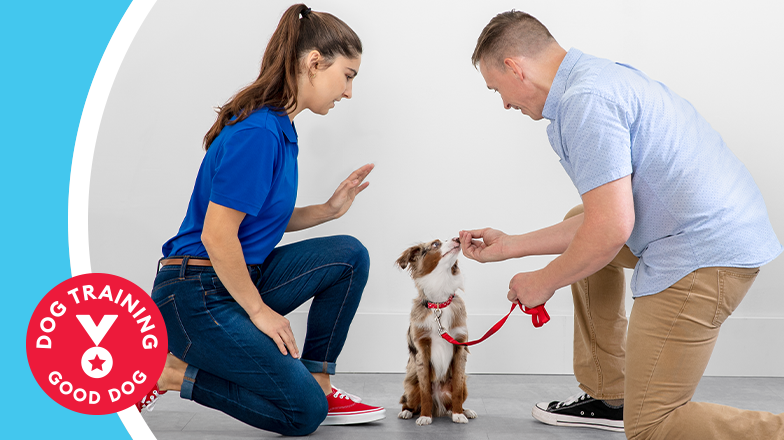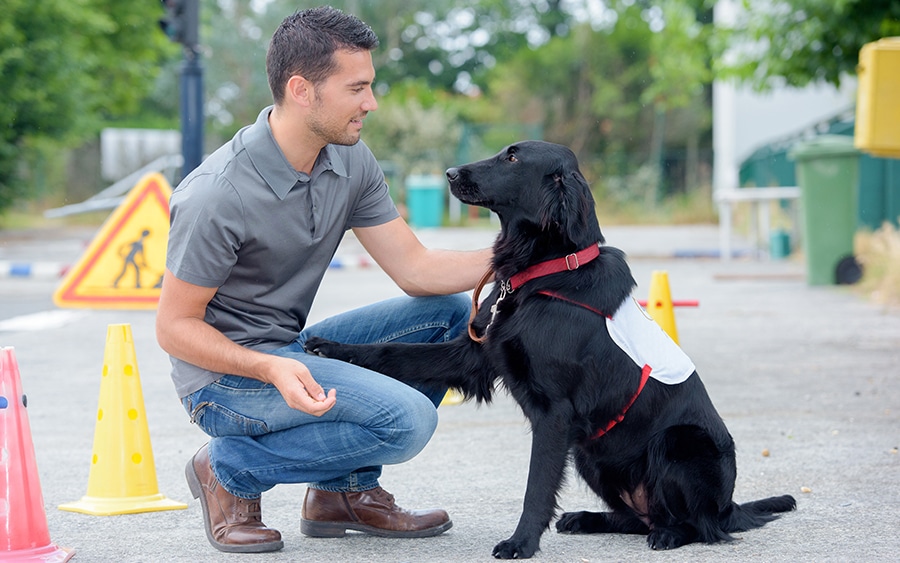Puppy Training That Teaches Key Skills for Lifelong Good Behavior
Puppy Training That Teaches Key Skills for Lifelong Good Behavior
Blog Article
Novice's Overview to Effective Pet Training in the house
Successfully training a dog at home requires a nuanced understanding of canine actions and effective communication approaches. Developing clear training goals, utilizing high-grade incentives, and preserving consistency throughout household participants are vital elements. Incorporating training right into daily routines can improve both interaction and retention.
Understanding Canine Actions
Recognizing dog behavior is essential for reliable training and fostering a harmonious partnership between human beings and their canine buddies - Puppy Training. Pet dogs communicate mostly with body language, articulations, and faces, making it vital for proprietors to translate these signals properly. Acknowledging habits such as tail wagging, growling, or shrinking can supply insights into a canine's emotion and intentions
Additionally, understanding the natural impulses of pets, such as their pack way of thinking, helps proprietors develop leadership roles within the household. This is important for developing a structured atmosphere where pet dogs feel protected and are a lot more responsive to training. Dogs are additionally affected by their socializing experiences; very early direct exposure to different atmospheres, individuals, and various other pets can substantially form their behavior later on in life.
Common behavioral concerns, such as aggressiveness, stress and anxiety, or excessive barking, often come from misunderstandings or unmet requirements. Observing and resolving these problems immediately can protect against rise and make certain a positive training experience. By fostering a deep understanding of pet habits, proprietors can tailor their training techniques to fit their canine buddies, eventually resulting in a satisfied and well-behaved pet.

Vital Educating Devices
A well-appointed training room can dramatically boost the efficiency of pet dog training in the house. Vital training devices make certain that both the pet and the instructor can participate in productive sessions that cultivate understanding and bonding.

Purchasing a tough leash and a comfortable, well-fitting collar or harness is essential for safety and security and control. These tools assist develop limits and guarantee the pet continues to be protected throughout training. Furthermore, an assigned training location, devoid of disturbances, help focus for both the instructor and the pet.
Educating help such as training pads, cones, or dexterity devices can also boost the experience by presenting range and difficulties. Having a notebook or electronic app for tracking development can be vital, allowing you to keep in mind successes and areas for renovation. Making use of these necessary devices will certainly develop a favorable training environment and lay the foundation for effective learning.
Creating an Educating Regimen
Developing a regular training routine is important for reliable dog training in the house. A well-structured routine not only assists in reinforcing wanted actions however also gives your pet with a feeling of safety and security and predictability. To develop a reliable training routine, start by determining particular training goals, such as fundamental commands, chain strolling, or housebreaking.
Select a designated time each day for click now training sessions, preferably when your dog is sharp and receptive. Procedure needs to be brief, approximately 5 to 15 mins, to keep focus and avoid tiredness. Uniformity in timing and environment will improve your dog's knowing experience.
Include training right into daily tasks to strengthen abilities. Technique commands during strolls or nourishment, which incorporates learning right into all-natural routines. Furthermore, continue to be flexible and change the regular as required, accommodating your pet's energy levels and mood.
Positive Support Methods

When carrying out positive support, it is important to pick rewards that are encouraging for your pet. High-value deals with, such as little items of hen or cheese, can be especially efficient during training sessions. Additionally, differing the rewards can preserve your pet dog's passion and excitement.
Begin with easy commands, like "sit" or "remain," and progressively progress to more intricate tasks. Uniformity is crucial; guarantee that all member of the family use the very same commands and incentive systems to avoid complication.
Additionally, it is important to stay person and prevent stress. Pet dogs, like humans, learn at their own pace. By cultivating an encouraging training atmosphere via positive reinforcement, you can improve your canine's understanding experience while strengthening the bond between you and your hairy buddy, preparing for effective training end results.
Typical Training Challenges
While educating a dog at home can be a fulfilling experience, it usually features a collection of usual obstacles that can evaluate both persistence and uniformity. One common issue is interruption. Dogs may come to be quickly averted by noises, activities, and even aromas in their atmosphere, making it see this here tough to maintain their focus during you could look here training sessions.
Another challenge is variance in commands and support. It can confuse the canine and impede progress if family participants make use of various hints or rewards. Developing a unified approach is crucial for efficient interaction.
Furthermore, dogs can experience aggravation or stress and anxiety, especially if they do not comprehend what is expected of them. This can cause unfavorable actions, such as barking or eating.
Finally, the timing of support is vital. Delayed incentives can decrease the effectiveness of favorable support, as pets may stop working to attach the actions with the reward.
Overcoming these obstacles calls for commitment, clear interaction, and a structured training plan - Puppy Training. Recognizing and attending to these typical obstacles will lead the method for an extra effective and enjoyable training experience at home
Verdict
In final thought, successful dog training in the house necessitates a comprehensive understanding of canine habits and reliable communication methods. By establishing clear training goals and utilizing top quality treats alongside favorable support, the training process ends up being much more rewarding for both the instructor and the pet. Uniformity, adaptability, and perseverance are important elements that facilitate understanding. Inevitably, integrating training right into day-to-day routines enhances the bond in between canine and owner, making the experience both enjoyable and efficient.
Establishing a consistent training routine is crucial for reliable dog training at home.Positive support strategies are basic to reliable dog training, advertising preferred actions through benefits instead than punishment. By cultivating an encouraging training setting through favorable reinforcement, you can enhance your canine's understanding experience while strengthening the bond between you and your fuzzy buddy, laying the foundation for effective training results.
In verdict, successful pet dog training at home requires a thorough understanding of canine behavior and reliable interaction strategies. By developing clear training goals and utilizing high-quality treats along with favorable reinforcement, the training process comes to be extra fulfilling for both the trainer and the canine.
Report this page